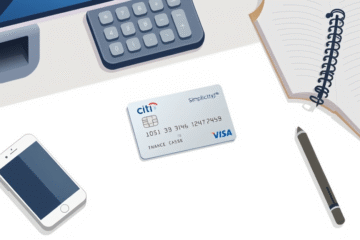Understanding How a Credit Card Works from Start to Finish
Credit Card usage has become a staple in modern financial management, offering consumers the flexibility to make purchases, manage expenses, and access credit as needed.
In this article, we will explore the intricacies of how credit cards function, including the significance of credit lines and limits, the impact of your credit history and income, and the secure processing of transactions.
We will also examine the billing cycle, payment strategies, and the importance of managing balances effectively to avoid interest charges.
Understanding these elements can help you make informed decisions about your credit card use.
Credit Card Lifecycle at a Glance
The credit card lifecycle begins with the application process, where understanding eligibility requirements is crucial for approval.
Prospective cardholders undergo a review of their financial background, including credit history and income level.
A successful application leads to the approval phase, granting you access to a line of credit up to a credit limit determined by the issuer.
This sets the stage for making purchases, from in-store to online, facilitated by Stripe’s secure transaction processing, which ensures each transaction’s successful completion.
Applying for a Credit Card: Eligibility and Approval
Credit card issuers determine your eligibility for a card by evaluating several key factors.
One crucial aspect they examine is your credit history, assessing your ability to manage and repay borrowed money.
Your credit score provides a quick reference for issuers, and a high score indicates reliability, making you a favorable applicant.
Additionally, issuers perform income verification to ensure you have a steady source of income to cover potential credit card payments.
Understanding these criteria is vital before applying, and preparation can significantly boost your chances of approval.
Reviewing your credit report and ensuring it is accurate can give you a head start.
Furthermore, it is helpful to gather documentation that proves your income, whether through pay stubs or tax returns.
Another factor often reviewed is your debt-to-income ratio.
Credit card issuers assess whether your current debts are manageable relative to your earnings.
This ratio helps in determining how much new credit you’re likely able to handle.
Additionally, issuers may look at your employment history as a signal of financial stability.
Stability in a job often correlates with the ability to make regular payments.
You might want to explore the requirements set by different issuers, such as those outlined by Navy Federal Credit Union, to fully understand the landscape.
- Proof of stable income
- A good credit score
- Low debt-to-income ratio
- Consistent employment history
- Current residence address verification
How Credit Limits Are Set
Credit limits are determined by a variety of factors including credit score, income, and the individual’s overall financial profile.
These components play a significant role in setting limits because they reflect a person’s ability to manage credit responsibly.
According to Investopedia, a higher credit score typically correlates with a higher credit limit because it indicates a strong history of repayment.
Income is equally critical as it assures issuers of your capacity to repay borrowed amounts.
Credit utilization ratio is another essential factor influencing credit limits.
This ratio is calculated by dividing your current credit card balances by your available credit.
Maintaining a low credit utilization ratio can positively affect your credit score, subsequently increasing your credit limit.
Imagine your Available credit as a cushion of financial security that lets you borrow in times of necessity without plunging into debt.
A solid credit utilization strategy leads to better financial opportunities and favorable credit terms.
Monitoring and optimizing your credit usage is crucial because it directly impacts your credit score and future financial options.
High credit utilization suggests potential over-reliance on credit, which can deter creditors from increasing your limit.
Regularly reviewing your credit report and being aware of your credit standing is vital.
Understanding how these factors correlate helps you make better financial decisions, such as applying for a higher credit limit when appropriate.
For additional details on how credit limits are established, visit the comprehensive guide at SmartAsset’s credit limit guide.
From Swipe to Confirmation: Inside a Credit Card Purchase
As you tap your card at a local coffee shop, the journey from swipe to confirmation kicks off.
Almost instantly, the card reader transmits your transaction data to a payment processor, which relays it to your card issuer for authorization.
This phase determines whether your account has enough available credit and checks other key parameters like account status.
Simultaneously, authentication protocols verify your card’s legitimacy, acting as a crucial security checkpoint.
If all conditions are met favorably, your purchase is approved, and you got that coffee.
Following approval, the transaction moves into the settlement phase.
Here, merchants send a batch of approved transactions to their bank, which requests payment from your card issuer.
At this juncture, rigorous fraud protection mechanisms and encryption ensure your data remains secure throughout the entire exchange.
Finally, once all checks align and the funds are transferred, the transaction is considered settled.
This seamless orchestration ensures both your confidence and security in every purchase, reassuring you of the safeguards in place with each tap of your card.
Decoding the Billing Cycle and Statement
Credit card users must closely understand how charges accumulate during the billing cycle, typically spanning between statement closing dates of roughly one month.
Charges made with the card during that time frame become part of the new balance reflected in the monthly statement.
The monthly statement, which users receive after each billing cycle, includes essential information such as the statement date, due date, outstanding balance, and minimum payment required.
This document outlines each transaction during the billing cycle, allowing users to track their spending habits.
By making at least the minimum payment by the due date, cardholders avoid late fees, although it’s crucial to pay off the full balance to eschew interest accrual.
For detailed guidance on billing cycles, you can refer to Experian’s Billing Cycle Guide.
Below is a simple representation of what a credit card statement might contain:
| Statement Date | Due Date | Balance | Minimum Due |
|---|---|---|---|
| 05/01 | 05/26 | $500 | $25 |
Paying Your Bill and Managing Balances
Managing your credit card payment effectively requires understanding the diverse ways you can handle your bills and balances.
It’s essential to know the difference between full, partial, and minimum payments, as each choice significantly impacts interest and your credit health.
Opting to pay the full balance helps you avoid any extra charges since no interest accrues; therefore, it’s the most beneficial for maintaining a healthy credit score.
Conversely, making only the minimum payment keeps your account in good standing but will accrue interest, resulting in higher costs over time.
Alternatively, partial payments fall in between, reducing some balance without fully eliminating interest charges.
To enhance your balance management, consider practical strategies like budgeting monthly expenses, consistently reviewing your statements, and setting up automatic payments.
Explore resources such as Chase’s credit card management tips for more insights.
- Paying the full balance eliminates interest charges and boosts credit scores.
- Making a partial payment reduces debt slightly but still includes some interest costs.
- Paying the minimum keeps the account current but incurs interest.
Interest, APR, and How to Avoid Extra Costs
Interest and Annual Percentage Rate (APR) work hand in hand when it comes to credit cards.
The APR represents the annual cost of borrowing money through your card and influences how much interest you’ll pay on balances carried beyond the grace period.
Interest begins to accrue right after this period ends, accruing daily.
By understanding the significance of APR, cardholders can better anticipate potential debt accumulations and manage their card usage wisely.
The grace period is critical for avoiding interest charges, falling between your billing cycle’s end and payment due date.
During this time, no interest is charged on new purchases, which means paying off your full balance within this frame prevents any interest from accruing.
Many credit cards offer a grace period of approximately 21 days, giving cardholders a valuable window to settle charges without extra costs.
Interest accrual is a continuous process once the grace period lapses.
The daily calculation means any remaining balance will generate further interest until fully resolved.
Monitoring your transactions and leveraging the grace period can help avoid accumulating charges.
Paying the balance in full each cycle remains the simplest way to prevent any interest charges, as emphasized by several financial experts including Bankrate’s guide on grace periods.
Therefore, understanding APR, utilizing the grace period, and grasping the mechanics of interest accrual are essential to avoiding unnecessary extra costs.
In conclusion, navigating the world of credit cards is essential for financial health.
By understanding the various aspects of credit card usage, including payments, interest accrual, and transaction security, consumers can optimize their credit management strategies and leverage their credit cards effectively.



0 Comments